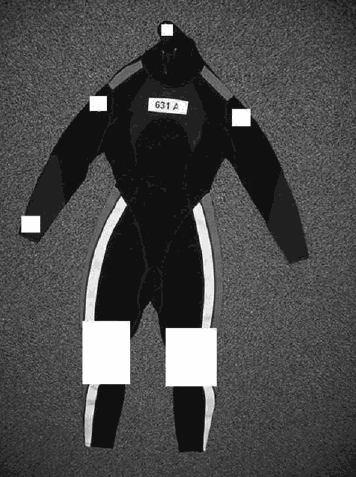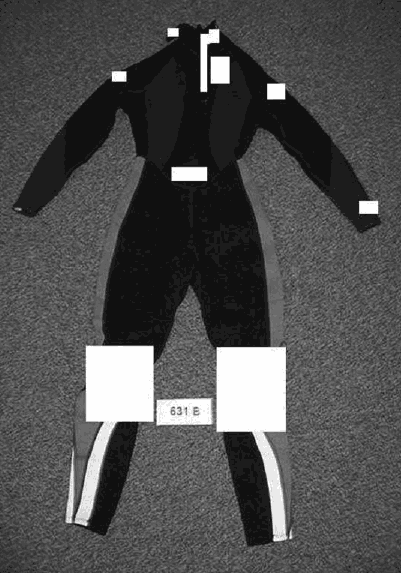

COMMISSION REGULATION (EC) No 2345/2003of 23 December 2003 concerning the classification of certain goods in the Combined Nomenclature- "Official Journal of the European Union", No L 346/41 of 31.12.2003 - |
THE COMMISSION OF THE EUROPEAN COMMUNITIES,
Having regard to the Treaty establishing the European Community,
Having regard to Council Regulation (EEC) No 2658/87 of 23 July 1987 on the tariff and statistical nomenclature and on the Common Customs Tariff (1), as last amended by Commission Regulation (EC) No 1949/2003 (2), and in particular Article 9(1)(a) thereof,
___________
(1) OJL 256, 7.9.1987, p. 1.
(2) OJL 287, 5.11.2003, p. 15.
Whereas:
(1) In order to ensure uniform application of the Combined Nomenclature annexed to Regulation (EEC) No 2658/87, it is necessary to adopt measures concerning the classification of the goods referred to in the Annex to this Regulation.
(2) Regulation (EEC) No 2658/87 has laid down the general rules for the interpretation of the Combined Nomenclature. Those rules apply also to any other nomenclature which is wholly or partly based on it or which adds any additional subdivision to it and which is established by specific Community provisions, with a view to the application of tariff and other measures relating to trade in goods.
(3) Pursuant to those general rules, the goods described in column 1 of the table set out in the Annex should be classified under the CN code indicated in column 2, by virtue of the reasons set out in column 3.
(4) It is appropriate to provide that, subject to the measures in force in the Community relating to double checking systems and to prior and retrospective Community surveillance of textile products on importation into the Community, binding tariff information issued by the customs authorities of Member States in respect of the classification of goods in the Combined Nomenclature and which is not in accordance with this Regulation, can continue to be invoked for a period of 60 days by the holder, under Article 12(6) of Council Regulation (EEC) No 2913/92 of 12 October 1992 establishing the Community Customs Code(3), as last amended by Regulation (EC) No 2700/2000 of the European Parliament and of the Council(4).
(5) The measures provided for in this Regulation are in accordance with the opinion of the Customs Code Committee,
_____________
(3) OJL 302, 19.10.1992, p. 1.
(4) OJL 311, 12.12.2000, p. 17.
HAS ADOPTED THIS REGULATION:
Article 1
The good described in column 1 of the table set out in the Annex shall be classified within the Combined Nomenclature under the CN code indicated in column 2.
Article 2
Subject to the measures in force in the Community relating to double checking systems and to prior and retrospective Community surveillance of textile products on importation into the Community, binding tariff information issued by the customs authorities of Member States which is not in accordance with this Regulation, can continue to be invoked for a period of 60 days, under Article 12(6) of Regulation (EEC) No 2913/92.
Article 3
This Regulation shall enter into force on the 20th day following that of its publication in the Official Journal of the European Union.
This Regulation shall be binding in its entirety and directly applicable in all Member States.
Done at Brussels, 23 December 2003.
For the Commission
Frederik BOLKESTEIN
Member of the Commission
ANNEX
Description |
Classification CN code |
Reasons |
(1) |
(2) |
(3) |
Unlined close-fitting garment, covering the whole body from the shoulder to the ankle enveloping each leg separately. With long sleeves. Hemmed at the sleeve ends and at the leg ends. With partial opening at the back reaching down to the waist and fastened by a zip. With a tight fitting collar, fastened at the back by a velcro type strap. The garment is made up of several panels, assembled by sewing. The garment is predominantly of cellular rubber panels covered on both faces with a layer of unicoloured knitted textile fabric (man- made fibres). Only a small front chest panel, two of the four back panels and the panels of the lower sleeves are of an embossed cellular rubber covered only on one face (on the inside of the garment) with a layer of unicoloured knitted textile fabric. (surf/diving suit) (see photographs No 631 A and 631 B) (*) |
6113 00 10 |
The classification is determined by the provisions of general rules 1, 3 (b) and 6 for the interpretation of the Combined Nomenclature (GIR), by note 7(e) to Section XI, by notes 2(a) to Chapter 40, 4 to Chapter 59, 1 to Chapter 61, and 1(e) to Chapter 95, as well as the wording of CN codes 6113 and 6113 00 10. The article is made up within the meaning of note 7(e) to Section XI and consists mainly of cellular rubber panels covered on both faces with a layer of textile fabric. These panels of combined materials give the essential character to the garment (GIR 3b). As the cellular rubber is covered on both faces with a layer of textile fabric, the latter is regarded as having a function beyond that of mere reinforcement, since it confers the essential character of textile to the material. Therefore, the textile fabric being present not merely for reinforcing purposes within the meaning of Chapter note 4, last paragraph, to Chapter 59, it is considered to be the constituent material of the article. (See also the HS Explanatory Notes to heading 4008, third paragraph, and fourth paragraph, (A)). Thus, the article is a garment made up of knitted fabrics of heading 5906 and, in accordance to note 1 to Chapter 61, is classified in subheading 6113 00 10. Classification in heading 4015 is excluded within the meaning of GIR 3b as only a minor part of the garment is made of sheets of cellular rubber covered only on one face with a textile fabric being present merely for reinforcing purposes (heading 4008). |
(*) The photographs are purely for information.

